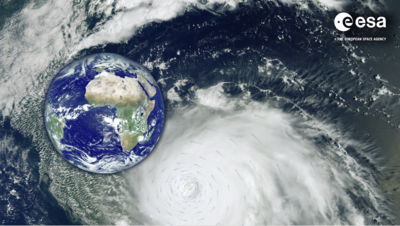Expert committee recommends the selection of the WIVERN satellite mission as the 11th Earth Explorer

The planned WIVERN (WInd VElocity Radar Nephoscope) satellite mission is one step closer to implementation: The Advisory Committee for Earth Observation (ACEO) recommended WIVERN as the eleventh Earth Explorer mission of the European Space Agency (ESA). As part of a multi-year and very rigorous scientific evaluation, a pair of missions were chosen as finalists, with WIVERN eventually being selected during a recent expert meeting in Prague. WIVERN was proposed by scientists from the Polytechnic University of Turin and the University of Reading. As a member of the scientific Mission Advisory Group of WIVERN, Cathy Hohenegger from the Max Planck Institute for Meteorology took a key role in the development of the mission.
“I am naturally delighted that the ACEO has given WIVERN such a positive assessment,” said Hohenegger. “The mission promises significant advances in our understanding of storms because it will provide continuous, global observational data on their metabolism that is not available from any other source. It will also provide mesoscale vertical wind measurements, the holy grail for convection studies.”
In September, the ESA member states will formally decide whether to approve WIVERN as the eleventh Earth Explorer. The mission is scheduled to launch in 2032–2033.
First measurements of wind within clouds
WIVERN will be the first satellite to measure winds inside clouds, thereby closing a gap in the existing wind observation network. The main instrument is a cloud radar that scans the atmosphere in a conical geometry and uses the Doppler effect to determine the wind from the signals received. This data can be used to validate and improve both numerical weather prediction models and storm-resolving climate models such as ICON. In addition, WIVERN will provide high-resolution measurements of rain, snowfall, and clouds with much better temporal and spatial coverage than is currently possible with satellites. WIVERN will also measure snow cover, sea ice concentration, and ocean surface currents, which is of interest for understanding polar climate and ocean dynamics.
ESA's Earth Explorer satellites are dedicated to different components of the Earth system, such as ice, vegetation, the Earth's interior, and the atmosphere. In May 2024, the EarthCARE satellite was launched into space as sixth Earth Explorer mission. The ORCESTRA campaign led by the MPI-M contributed to its validation.
Further information
Contact
Dr. Cathy Hohenegger
Max Planck Institute for Meteorology
cathy.hohenegger@mpimet.mpg.de
